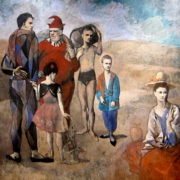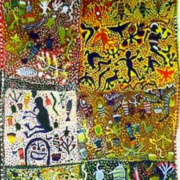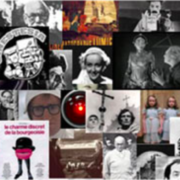“Un granello di sabbia in un’ostrica”. Recensione di Gruppo di Claudio Neri (1998) Londra e Philadelphia: Jessica Kingsley
Tradotto dall’italiano, 1995, da Trollope C.
ITALIANO – ENGLISH
Gruppo. Borla, Roma, (1995).
Le Groupe. Mànuel de psychanalyse de groupe. Dunod, Paris, (1997).
Grupo. Manual de psicoanlisis de grupo. Nueva Visión, Buenos Aires,(1997).
Group. Jessica Kingsley, London and Philadelphia, (1998).
Grupo. Imago Editora, Rio de Janeiro, (1999).
Ho iniziato a leggere questo piccolo volume nella serie InternationalLibrary of Group Analysis con interesse ed passione, imparando molto,riluttante a riporlo. In poco tempo mi sono trovata sovrastimolata, mentretentavo di aggiungere ed intrecciare concetti per me nuovi con ciò che stavogià scrivendo. Questo libro mi ha fatto pensare ad uno smorgasbord tropporicco: alcune cose che mi piacciono molto, alcune che vorrei soltantoassaggiare, alcune di cui vorrei rimpinzarmi, altre alle quali sonoallergica!
Mi sono trovata a non leggere niente in sequenza e a non riuscire a seguirneappieno nessuna; forse in modo simile all’esperienza che si ha come terapistadi gruppo. Ciò è in parte dovuto alla presentazione originale che Malcolm Pinesdescrive come “degli inserti user-friendly dentro il testo”. Ma a volte mi sonotrovata ad essere in disaccordo con le spiegazioni dei concetti date da Neri,rispetto a quelli che non sono familiari con gli stessi o che li dovesserotrovare fuorvianti. Per me, era una fonte di distrazione, sebbene aprire illibro per leggere qualche idea qua e là può rappresentare un’esperienzapositiva, a causa della ricca varietà della letteratura e dei concetti anchebrevemente trattati. Essi costituiscono una risorsa preziosa per riportare ilettori agli autori originali. Dopo tutto, il più delle volte non disponiamodel tempo necessario per leggere un libro da capo a fondo, preferiamoassaggiare il materiale quando l’occasione si presenta, sicché questo tipo dipresentazione è probabilmente “user-friendly”, anche se alcuni dettagli sono untantino fuorvianti.
Non mi sono trovata d’accordo su vari punti e, poiché troppe distinzioniavranno sicuramente l’effetto di un granello di sabbia in un’ostrica (per usareil paragone che Claudio Neri ha usato in risposta a qualcosa che io avevodetto), mi sono trovata anche a chiedermi come mai egli fosse arrivato adessere in grado di fare determinate asserzioni; mi mancano i dati di fondo etendo a rigettare veementemente delle conclusioni non comprovate o dellededuzioni. Reagisco in modo simile nel leggere gli scritti fertili di JuliaKristeva, anch’essa con la tendenza a riferire pochi dati reali e molte diquelle che io tendo a considerare fantasie per spiegare il succhiare ilpollice, in assenza poi di quel materiale clinico che, per me, dovrebbe esserela base su cui poggia tutta la formulazione teorica. Non so fino a che puntociò rappresenti una differenza tra l’ethos di lavoro britannico e quellocontinentale, né quanto sia una caratteristica individuale piuttosto che unageneralizzazione plausibile.
Uno degli aspetti più validi di Gruppo è la sua presentazione succinta diun’ampia letteratura selezionata sul lavoro di gruppo, dalla Francia edall’Italia, con la quale molti operatori anglofoni non sono familiari, eancora il Glossario, la rassegna storica e l’amalgamazione dei concetti,parzialmente integrata, di Freud, Bion, Foulkes e di psicanalisti non di gruppo(come quella dello “spazio privato” di Masud Khan).
Di particolare interesse le due interviste con M. Zanori sul gruppo e lamassa psicologica che si accumula tramite la “emozione pura”, e latrasformazione del gruppo in una istituzione, attraverso la”esperienza-funzione” e l’altra con S. Marinelli sulla terapia di gruppo, iltema dell’identità ed i “nuclei della sofferenza”. Queste, come altri capitolie paragrafi del libro, forniscono degli scorci su mondi nuovi di concetti. Misento come se stessi leggendo affermazioni telegrammatiche, mentre mi trovo adesiderare, o meglio mi occorrono, ore di discorso con l’autore e con quellialle cui idee ha attinto per utilizzarle in modo proprio.
Due “momenti cruciali” sui quali Neri si sofferma un po’ di più nel propriodiscorso di vasta portata e spesso originale, sono ciò che egli chiama “lostato emergente del gruppo” e “lo stadio della Comunità dei Fratelli”.Quest’ultimo tratta dell’eredità affettiva del gruppo, alla quale si torna inseguito quando si considera il tema del Gruppo come auto-rappresentazione. Neriritiene che uno degli aspetti primari della funzione terapeutica del pensierodi gruppo sia la capacità di metabolizzare l’ansia e l’angoscia cheverosimilmente il singolo, da solo, potrebbe non essere in grado di fare. Altreimportanti idee che egli tratta brevemente, e introduce in modo succinto, conle quali sollecita il lettore, sono l’efficacia della comunicazione e dellanarrazione, la quale richiede un’effettiva e intenzionale capacità espressiva,oltre a ciò che egli chiama il commuting tra gruppo ed individuo tramite ladiffusione transtemporale, un’occupazione silenziosa del “campo mentale” o la”mimesi” di un gruppo o la natura della relazione di discussione in grupponella semiosfera e la “costellazione emotiva-fantasmatica” attiva nel gruppo,grazie alla quale un individuo diventa il mezzo di una commutazione affettivasenza esserne conscio. Infatti, il modo in cui individuo e gruppo interagisconotrasformando e trasmutando il sentimento e la comunicazione sono elementi basedel pensiero di Neri.
Per me tali nozioni sono di particolare interesse, perché mi sembra che eglistia descrivendo anche un metodo di trasmissione di ciò che io ho descrittocome fenomeni di contagio affettivo nei gruppi (Issroff 1997, 1999 a &b).
Queste sono solo alcune delle numerose idee nuove e stimolanti del libro chene offre moltissime, un libro che merita seria attenzione da parte di qualsiasilettore interessato ai fenomeni di gruppo e alla comprensione della terapiadinamica.
La prefazione di Bion Talamo e la premessa di Malcolm Pines anch’essemeritano di essere lette. Per coloro come me che dipendono dall’inglese perpoter leggere, e il cui interesse a questo libro venne stimolato dallarecensione di Marissa Dillon Weston dell’originale Gruppo Italiano in Analisidi Gruppo, nel marzo 1997, mi sento di aggiungere la mia raccomandazione allasua, ripetendo che varrebbe la pena acquistare questo libro.
Dr. Judith Issroff is Israeli, British and South African. She was born andmedically qualified in South Africa, trained in social, child, adolescent andfamily psychiatry at the Tavistock School of Family Psychiatry and CommunityMental Health in London, becoming a consultant in the Adolescent department in1971 and ran training groups for senior and medical personnel in British HomeOffice Penal System for seven years. She trained as a psychoanalyst, alsoqualified in the psychoanalysis of children and adolescents in the BritishIndependent School of Psychoanalysis. She is a Member of the Group AnalyticSociety, the British Psychoanalytic Society, the Royal College of Psychiatristsand the British Confederation of Psychotherapists. and is registered with CRIas a trainer in conflict mediation. Her exposure to Holocaust studies led herto emigrate to Israel. She worked briefly with Judith Kestenberg on the JeromeK. Ricker study of the Organized Persecution of Children, interviewed andworked with Holocaust survivors and ran a counseling service at the firstgathering of survivors in Jerusalem. She founded and is project director ofIASC: The Israeli Association for Social Care, Health and Solution ofConflicts, an NGO set up to work locally, regionally and internationally toimplement recommendations drawn up at the 1994 WHO Cairo Conference on BuildingTolerance for Diversity as to how mental health professionals might help tobuild healthier societies and find non-violent means of resolving conflict. Sheunderstands that insight without action is of little significance (writing maybe considered ‘action’). Her homes are both in Israel and in London although atpresent she lives in a remote farm cottage in mid-England’s Peak DistrictNational Park and works as an NHS Consultant in child and family psychiatry.
ENGLISH VERSION
“A grain of sand in an oyster”: Review of Group by Claudio Neri (1998)London and Philadelphia:Jessica Kingsley (pp123). Translated from Italian, 1995by Trollope C.
I began to read this slim volume in the International Library of GroupAnalysis series with interest and excitement, learning a great deal, notwanting to put it down. Soon I was overstimulated, wanting to add to andinterweave concepts new to me with what I’ve been writing. The book reminded meof a smorgasbord … too much, too rich, some I love, some I only want totaste, some I will gorge on, and some I’m allergic to! I found I read nothingsequentially and couldn’t quite follow any sequence – much the experience oneundergoes as a group therapist. This is in part due to the original layout thatMalcolm Pines refers to as ‘user-friendly inserts within the text’. Butsometimes I found I disagreed with Neri’s would-be-helpful explanations ofconcepts for those unfamiliar with them or found them misleading. For me theywere distracting although to dip into the book and merely read a few of them initself can be a positive educational experience because of the rich variety ofliterature and concepts succinctly covered. They are a valuable resource tolead readers to the original writers. After all, more often we have but littletime to read right through a book and rather dip into the material when theopportunity arises, so this kind of presentation is probably ‘user-friendly’even if a trifle misleading in some details. I found I was arguing in severalplaces and just as various insights are surely going to act like “a grain ofsand in an oyster” (to use the similie Claudio Neri wrote to me in response tosomething I’d said), equally I found I was wondering how he’d come to be ableto make some statement or another – I miss the data and almost vehementlyreject to me unsubstantiated ‘conclusions’ or inferences. I react in much thesame way when reading the fertile writing of Julia Kristeva, who is also low onreporting actual data and high on what I sometimes regard as accompanyingfantasies to thumb-sucking in the absence of the clinical material that for mehas to be the basis of all theoretical formulation. I don’t know how much thisis a difference between British and continental working ethos, or how much anindividual characteristic rather than a plausible generalization. One of themost valuable aspects of Group is its succinct presentation of selectedliterature on group work from France and Italy with which many English speakingworkers are not familiar, along with the Glossary, and also the historicalreview of and amalgamation of concepts, in part integrated, from Freud, Bion,Foulkes and non-group psychoanalysts (such as that of Masud Khan’s ‘privatespace’). Two interesting interviews with M. Zanori on the Group and thePsychological Mass that accrues through ‘pure emotion’ and the Transformationof the Group into an Institution through ‘experience-function’ are appendedalong with one with S. Marinelli on the Therapeutics in the Group and ‘nucleiof suffering’. These, and indeed chapters and paragraphs throughout the bookprovide tantalizing peeps into new worlds of concepts. I feel I’ve been readingtelegrammatic statements and now want and indeed need hours of discourse withthe author and those whose ideas he has made use of in his own way. Two’crucial moments’ upon which Neri dwells a moment longer in his widely rangingand often original discourse are what he calls “the Emerging group state” and”the Fraternal Community stage.” The latter deals with the group’s affectiveheritage to which he later returns when he tackles the subject of the Group asSelf-Object. Neri views one of the primary aspects of the therapeutic functionof group thought as its capacity to metabolize anxiety and anguish, which anindividual may not be able to work through alone. Other important ideas whichhe touches on, sketchily introduces and with which he tantalizes his reader areeffective communication and narration, which demands an effective intentionalexpressive capacity, and what he calls commuting between group and individualthrough transtemporal diffusion, a silent occupation of a group’s ‘mentalfield’, ‘mimesis’ – the nature of the relationshp of group discussion in thesemiosphere and ‘the emotive-phantasmatic constellation’ active in the group bywhich an individual is the means of affective commuting without being aware ofit. Indeed the manner in which individual and group interact, transform andtransmute feeling and communication are basic elements to Neri’s thinking. Ifind these notions of particular interest as he seems to me to be describingalso a method of transmission of what I have described as affect contagion phenomena in groups (Issroff 1997,1999a&b). These are only a few of many novel and stimulating ideas in a book supersaturated with them, a book that merits serious attention from any reader interested in group phenomena, dynamic understanding and therapy. Partheope Bion Talamo’s Preface and Malcolm Pines’s Foreword are also worthwhile reading. For those like myself who are dependent on English for reading and whose interest in this book was whetted by the review by Marissa Dillon Weston of the original Italian Gruppo in Group Analysis in March 1997, I can add my recommendation to hers that this book is worth acquiring.





